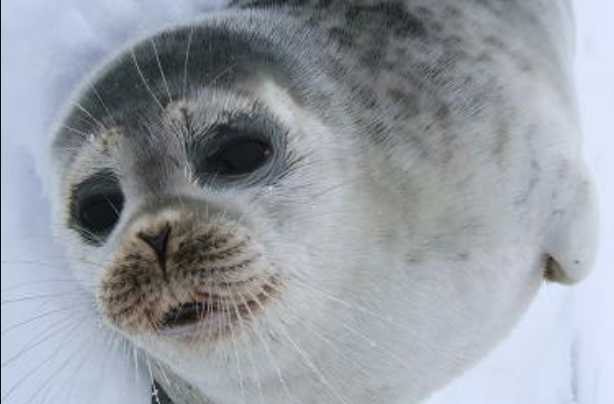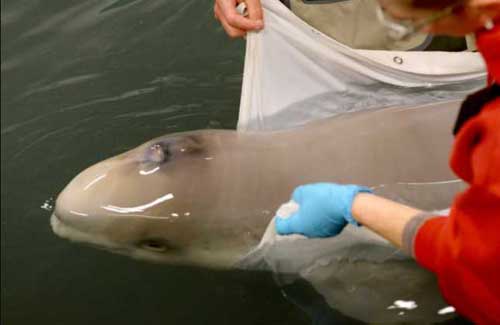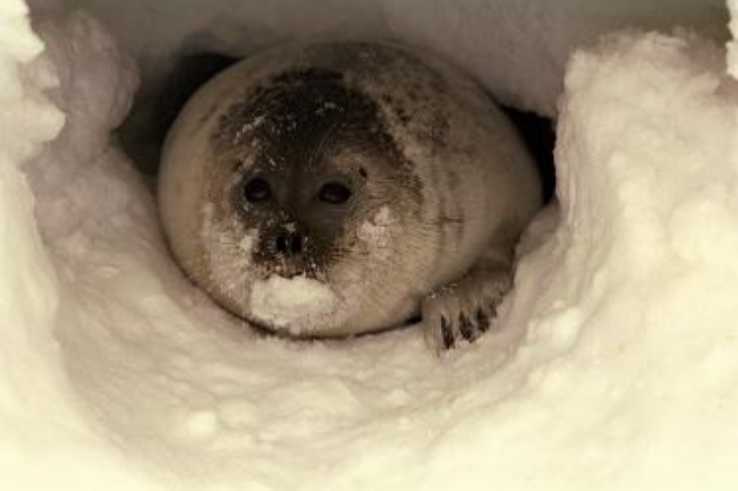
In December 2012, NOAA Fisheries declared four subspecies of ringed seals, including the Arctic ringed seal in Alaskan waters, as threatened or endangered under the Endangered Species Act (ESA). After extensive input from local and state governments, Native partners, and the public to determine proposed critical habitat areas, NOAA Fisheries today is releasing those proposed designations for public comment. The proposed critical habitat designation includes no regulatory restrictions, only a consultation requirement for federal agencies. Arctic ringed seals are also protected under the Marine Mammal Protection Act.
The proposed critical habitat area in the northern Bering, Chukchi, and Beaufort seas provides sea ice conditions that are essential for the survival of Arctic ringed seals. The designation of critical habitat areas, land or water under United States jurisdiction that includes habitat features essential to the conservation of a threatened or endangered species, is required for species listed under the ESA.
“After reviewing the best available information, our scientists identified the habitat features that are essential for sustaining Arctic ringed seals–a species that is likely to become endangered in the foreseeable future due to climate change,” said NOAA Fisheries Alaska regional administrator Dr. James Balsiger. “We look forward to hearing from members of the public on this proposal.”
Ringed seals nurse and protect their pups in snow caves, which are threatened by late ice formation in the fall, rain-on-snow events in the late winter, earlier break-up of spring ice, as well as decreasing snow depths, which are projected to be too shallow for snow cave formation by the end of the century. Ringed seals also rely on sea ice for extended periods during molting, breeding, whelping, and nursing. Scientific evidence shows that sea ice is projected to shrink both in extent and duration in the future.
A critical habitat designation must be supported by a full analysis of economic, national security, and other impacts. In 2012, the President directed that any future designations of critical habitat carefully consider all public comments on relevant science and economic impact, including those that suggest methods for minimizing regulatory burdens. NOAA Fisheries is releasing its draft analysis of these impacts for review during the comment period. NOAA Fisheries is also seeking input on whether any particular areas should be considered for exclusion from the proposed critical habitat.

Upon designation of a critical habitat area, federal agencies are required to consult with NOAA Fisheries on actions they authorize, fund, or carry out to ensure their actions are not likely to destroy or adversely modify critical habitat. Designation of critical habitat would not affect subsistence harvest of ringed seals by Alaska Natives.
There will be a 90-day public comment period on the proposal and NOAA Fisheries will soon announce locations and times for public hearings. The agency will consider comments received as it develops the final critical habitat designation.
The public may submit comments, identified by FDMS Docket Number NOAA-NMFS-2013-0114, via the Federal e-Rulemaking Portal at www.regulations.gov
NOAA Fisheries will also accept written comments addressed to: Jon Kurland Assistant Regional Administrator for Protected Resources Alaska Region NMFS Attn: Ellen Sebastian P.O. Box 21668 Juneau, AK 99802-1668
For more information, visithttps://alaskafisheries.noaa.gov/protectedresources/seals/ice.htm








